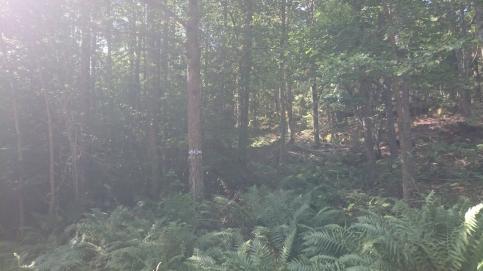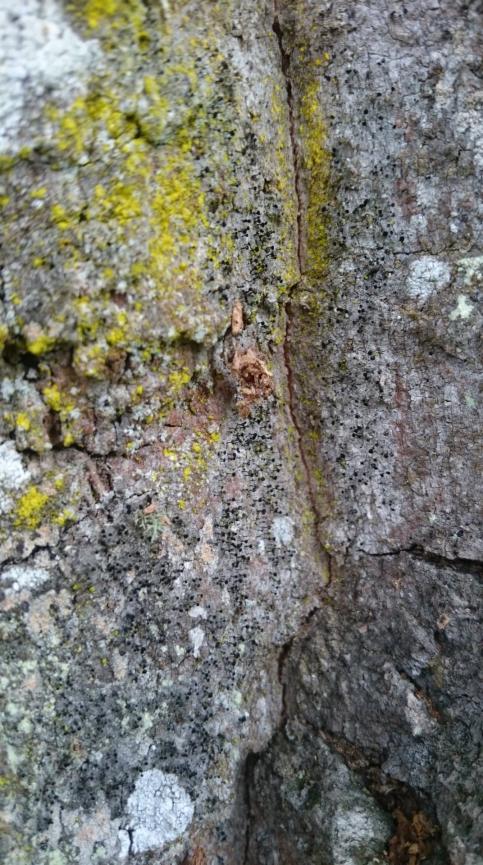Methods
Management need in protected areas

A nationwide inventory of the management need in already set aside Habitat protection areas and Nature conservation areas was performed during 2018 by the Swedish Forest Agency. During the inventories, an area’s current status regarding e.g. tree composition was evaluated. Current status was compared to original status when the area was set aside, to detect changes and to see if the area’s values had been preserved. A brief species inventory was also performed during the inventories of management need, to detect if the species composition had been preserved. Based on this, suitable management options were proposed. All management options were registered and transferred into a database.
The data I received were from inventories performed in southern Sweden (below Limes Norrlandicus), including 3437 Habitat protection areas and 2416 Nature conservation areas. Received data included, inter alia, area-ID, area description, tree composition and management need. The data was organized in Microsoft Excel to make it easier to perform descriptive analysis.
Field inventory of oak-rich environments

Study area and selection of areas
The study was performed in the province Östergötland in southern Sweden. Selection of areas was done by using data received from the Swedish Forest Agency in Linköping on all Nature conservation agreements and Habitat protection areas present in Östergötland province. ArcGis 10 software was used to define the magnitude of the study by creating a buffer around Linköping city centre with a radius of 45 kilometres. All Nature conservation agreements and Habitat protection areas with a minimum or equal content of 20 % oak (Quercus robour) occurring in the buffer, were selected. In total, 53 areas in eight different municipalities occurred inside the buffer area.
Field methods and data collection
The field work was conducted from the beginning of June until end of August 2018. In each area, all oaks with a diameter larger or equal to 80 centimetres (151 cm in circumference measured at breast height) were identified. A maximum of ten oaks in each area were inventoried and if there were less than ten oaks, all oaks reaching the 80 centimetres limit were inventoried.
Several variables were measured from the oaks and the surrounding area;
- Trunk circumference (measured at breast height)
- Bark fissure depth
- Tree vitality
- Area’s openness 50 meters from the oak
- Canopy cover [total, coniferous trees, deciduous trees and bushes & young trees(<10cm)]
Each oak was also searched for several predetermined lichen species on the trunk up to around 150 cm above the ground (Table 2 in results). When a lichen was identified, the coverage was estimated using a transparent paper with cm2 squares.
Study species
Lichen species that were included in the study (Table 2 in results) are species which have been shown to have a strong association to old living oak trees. All included species apart from Chrysothrix candelaris are species either included in the Swedish Red List or species used in Woodland key habitat inventories as indicator species for valuable forest areas with a high conservational value. Chrysothrix candelaris was included since the species may give an indication of oaks that start to become suitable substrates for several other threatened and valuable lichen species.
Statistical analysis
The effect of eight different variables (listed above) on occurrence and abundance of lichens were analysed using generalized linear models (GLM). The definition of abundance was the total coverage (cm2) of lichens per visited oak, while occurrence was either present (1) or absent (0). Each analysis was performed on two species, Chaenotheca phaeocephala and Calicium adspersum. The analysis of individual species was performed since Chaenotheca phaeocephala & Calicium adspersum dominated the data (Table 2). Occurrence of lichens were analysed with a binomial generalized model (GLM) with logit link function, while the abundance of lichens was analysed with a gaussian generalized linear model (GLM) with identity link function. Abundance was log-transformed to improve normality before performing the analysis.
Responsible for this page:
Director of undergraduate studies Biology
Last updated:
05/10/19
